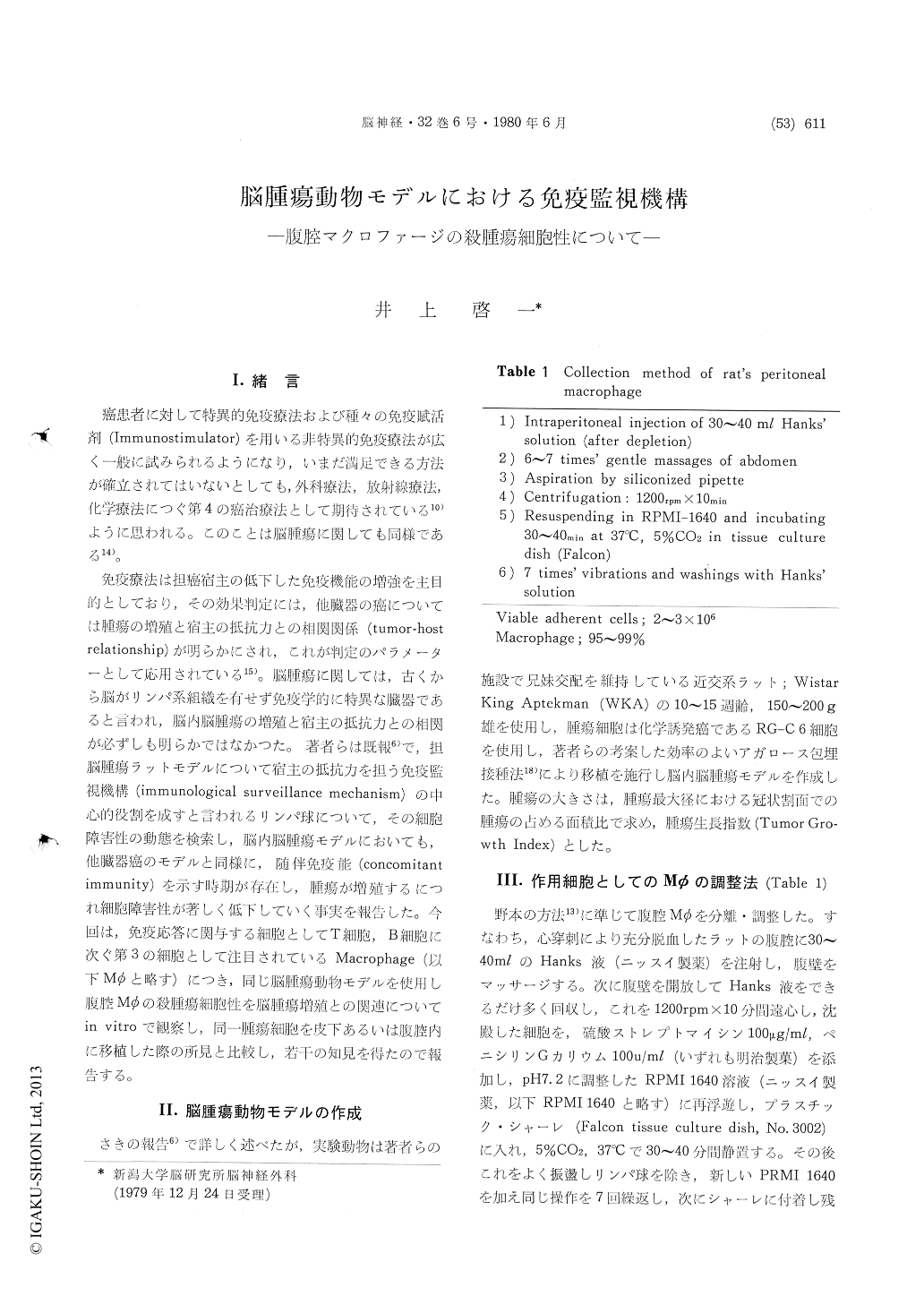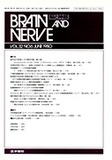Japanese
English
- 有料閲覧
- Abstract 文献概要
- 1ページ目 Look Inside
I.緒言
癌患者に対して特異的免疫療法および種々の免疫賦活剤(Immunostimulator)を用いる非特異的免疫療法が広く一般に試みられるようになり,いまだ満足できる方法が確立されてはいないとしても,外科療法,放射線療法,化学療法につぐ第4の癌治療法として期待されている10)ように思われる。このてとは脳腫揚に関しても同様である14)。
免疫療法は担癌宿主の低下した免疫機能の増強を主目的としており,その効果判定には,他臓器の癌については腫瘍の増殖と宿主の抵抗力との相関関係(tumor-hostrelationship)が明らかにされ,これが判定のパラメーターとして応用されている15)。脳腫瘍に関しては,古くから脳がリンパ系組織を有せず免疫学的に特異な臓器であると言われ,脳内脳腫瘍の増殖と宿主の抵抗力との相関が必ずしも明らかではなかつた。著者らは既報6)で,担脳腫瘍ラットモデルについて宿主の抵抗力を担う免疫監視機構(immunological surveiliance mechanism)の血中心的役割を成すと言われるリンパ球について,その細胞障害性の動態を検索し,脳内脳腫瘍モデルにおいても,他臓器癌のモデルと同様に,随伴免疫能(concomitantimmunity)を示す時期が存在し,腫瘍が増殖するにつれ細胞障害性が著しく低下していく事実を報告した。
A rat brain tumor model was prepared by im-planting RG-C6 tumor cells in the brain of inbred WKA rat by soft agar technique (Sobue et al., 1977). Tumoricidal effect of peritoneal macrophages from this model was studied in vitro by 3H-uridine technique at various stages of the tumor growth.
Tumoricidal effect (cytotoxicity index) of perito-neal macrophages was rather higher in 12 cases(25.92±9.83: tumor growth index, 11-20) than in 6 cases of the control group (14.00±14.18). It was revealed that its rising tendency came later than the rising phase of cytotoxicity of peripheral blood lymphocytes (tumor growth index, 0-10) which was already reported by authors. This observation has a strong resemblance to other animal tumor models.
On the other hand, comparing the tumoricidal effects of peritoneal macrophages and peripheral blood lymphocytes from rat brain tumor modelwith those from i. p. or s. c. immunized rats, un-doubtedly the former was lower than the latter. In view of these facts, some results were obtained as follows. 1) The induction of killer T cell (effector T cell) was incomplete and 2) differ-entiation of SMAF (Specific Macrophage Activating Factor) producing cell (sensitized T cell) was difficult in the brain. And then I came to a con-clusion that the antigen recognition system of the brain was handicapped.

Copyright © 1980, Igaku-Shoin Ltd. All rights reserved.


